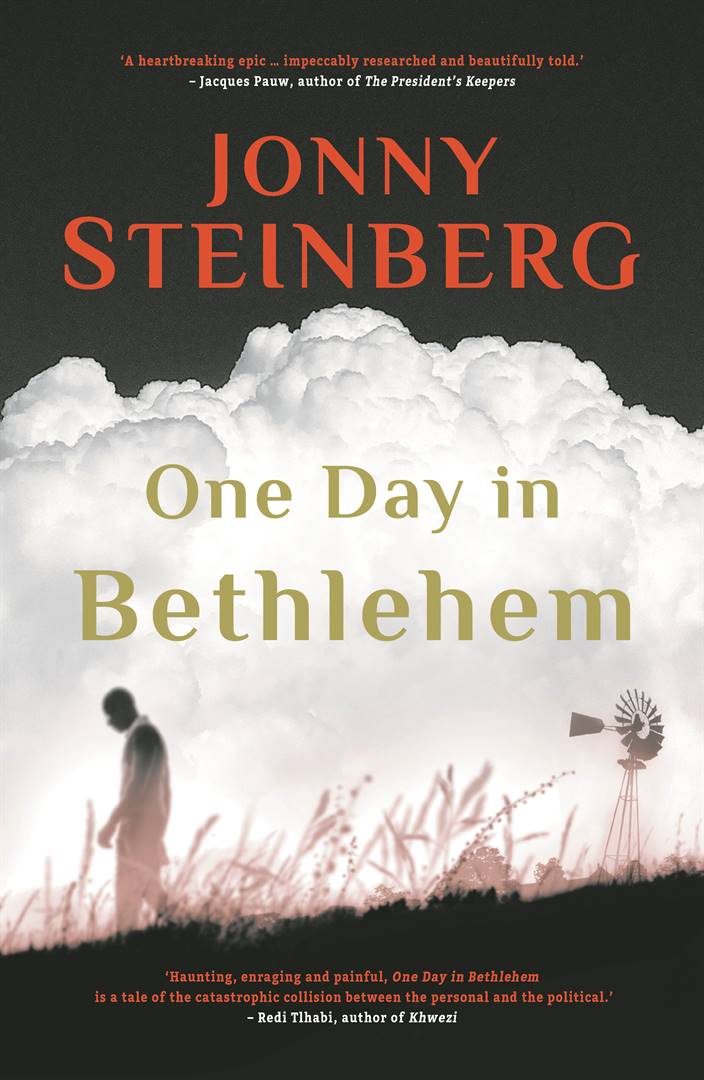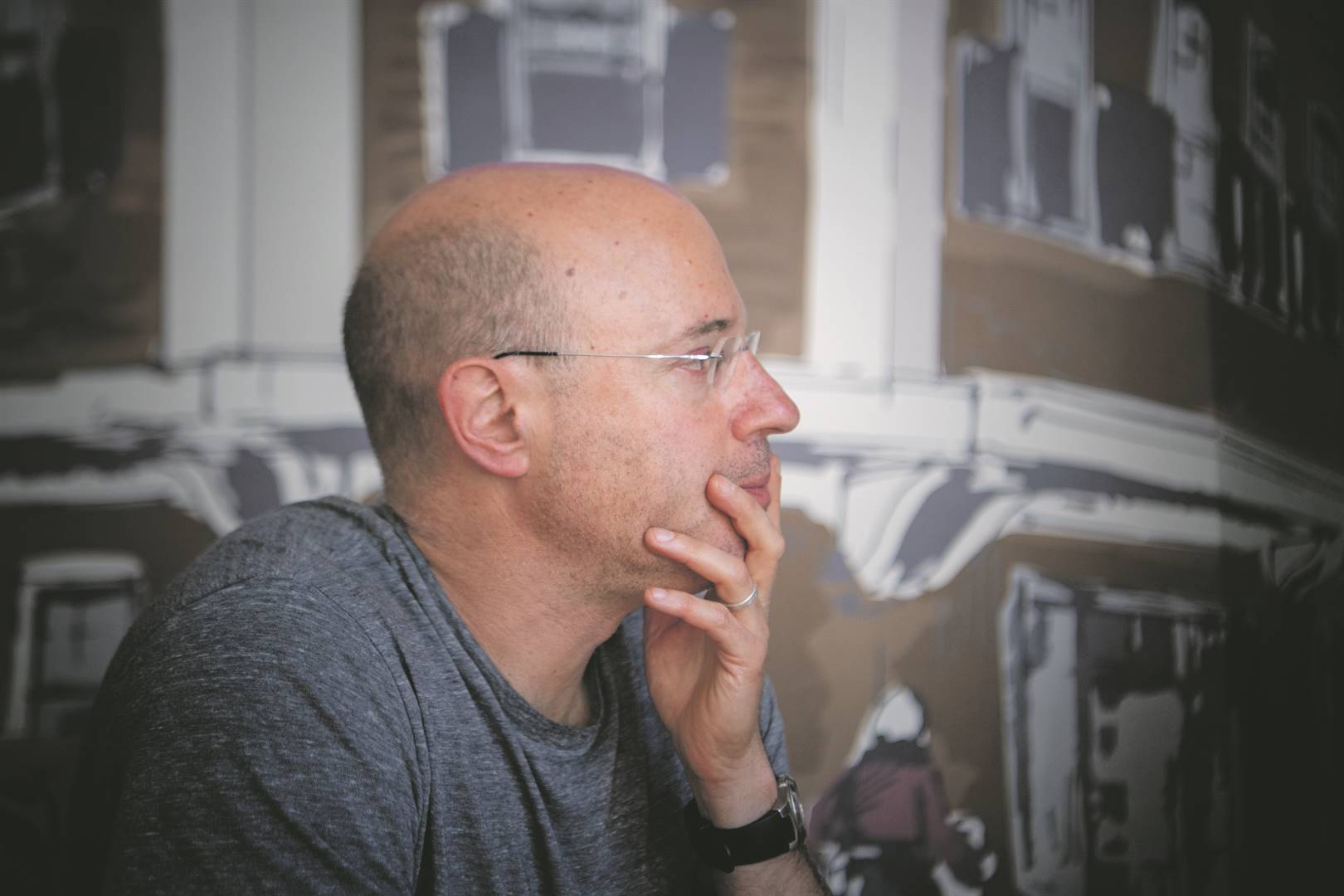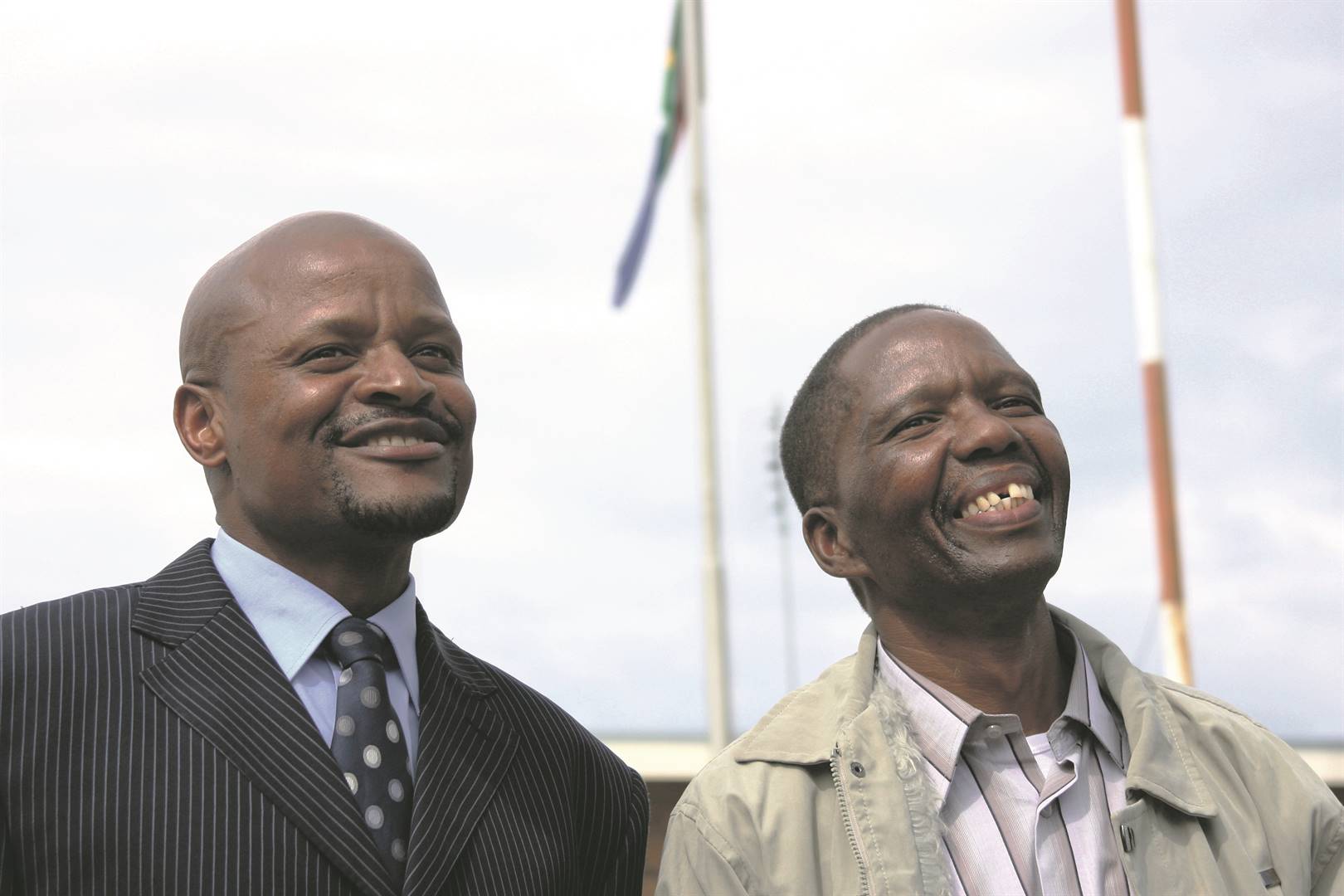
When I meet up with Jonny Steinberg at the Origins Cafe at Wits University, I say to him that reading his latest book was like climbing a tall tree. A difficult task where the climber wants to quickly reach the top of the tree but with no obvious end in sight.
The epigraph of this book, One Day in Bethlehem, taken from British playwright and Nobel Prize winner Harold Pinter, had partly contributed to this helpless feeling as it reads: “A thing is not necessarily either true or false; it can be both true and false.”
It had seemed unclear to me, while reading the book, what it was that could be “either true or false” as the history of South Africa, and its deep dehumanisation of black people, was something universally accepted.
But as I continued to read it became disturbingly evident what Steinberg was alluding to.
Steinberg’s latest book – by far the most difficult to read – probes questions of truth, ethics, narrative and justice. It follows the life of Fusi Mofokeng, who is from Bohlokong, a black township in Bethlehem, as it attempts to understand an injustice that was committed right before our transition into democracy in 1994.
One Day in Bethlehem by Jonny Steinberg
Jonathan Ball Publishers
320 pages
R270
On April 2 1992 a murder was committed on the outskirts of Bethlehem in the Free State, when a white police officer was shot dead and another seriously injured. After this incident, the men who were in a bakkie full of AK-47s were arrested and Mofokeng and Tshokolo Mokoena were accused of being accomplices and subsequently jailed for 19 years.
However, as it transpires, Mofokeng and Mokoena were never involved in the murder. Mofokeng was implicated simply because his brother-in-law, Sikhalo Ncala, had knocked on his front door on the morning of April 2 1992 and this knock would drastically change his life.
Steinberg says that his primary motivation for writing this book was an attempt to understand how South Africa looked through the eyes of someone who had never seen its early transition into democracy. The genesis of this book was an article he read by Rowan Philp, about Mofokeng and Mokoena who had just been released from prison in 2011.
After reading this article, Steinberg says: “I wanted urgently to meet Fusi Mofokeng. I wanted to borrow the eyes of a person who had walked into 2011 from the past. For I had it in mind that we’d forgotten what had changed and what had not since the end of apartheid; that it would take an insurmountable effort to distinguish the old from the new. What an opportunity, I thought, to consult a person who has been as if asleep all these years.”
And consulting with Mofokeng is precisely what Steinberg does. What immediately becomes evident to the reader as Steinberg and Mofokeng start talking is that Mofokeng does not speak in a language that the author, or most readers, is accustomed to.
For one, it becomes increasingly clear that how Mofokeng thinks about his life, particularly his childhood, is something profoundly different from how most of us retain memories and what Steinberg later learns about his life. Mofokeng seems to have retained a strong idyllic sense of his life before he went to prison, as he remembers his childhood as having been largely “good” when that was in fact not the case.
Steinberg, an extraordinary investigator and reader, is immediately suspicious of this narrative. While there are terrible events that happen to most people, which change the course of their lives, it seems implausible to Steinberg that anyone can ever claim to have always had a “good” or “peaceful” upbringing.
It is here, as it becomes evident to Steinberg, that he discovers that Mofokeng, like all of us, has an unreliable memory. What is it, then, that Mofokeng is hiding and does not want to let the world into?
This, ironically, does not turn out to be the most important question that the book is probing. What we find out, extraordinarily, is that Mofokeng has decided to completely reconstruct his memories because of the great injustice that was done to him.
When I ask Steinberg about this he responds: “It is Fusi’s ability to reinvent himself that is responsible for his resilience … He’s reconstituted who he is by virtue of fitting new memories. It’s a new self. It’s a very hard idea to get our heads around.”
What is striking about this story is that although Mofokeng has a strong sense that a great injustice was done to him, when he is released from prison he comes out with a stronger sense of optimism, of what he can become. Instead of being angry with the world, as one would expect, Mofokeng is more concerned with how he can make up for the time he has lost.
This is strange to read since, in 2011, as Steinberg would say in a radio interview, most South Africans had started to become sceptical about the new dispensation. What becomes fascinating, however, as Steinberg delves into the events of April 2 1992 is that the story that he has been told by Mofokeng, and those he was arrested with, is in fact a story that, by and large, has been fabricated.
But then this is precisely the question that the book probes. What is fabrication and what are its links to memory, justice and, in this context, apartheid? After all, apartheid was itself a fabrication and how does one make sense of the victims of apartheid when one fabrication intrudes on another?
At the end, Steinberg says it was not necessarily the events of April 2 1992 that came to matter to him. “It’s quite frustrating that I’m not quite sure [of April 2] … I don’t think the truth of that day matters that much. He [Fusi Mofokeng] would disagree and say I want to show that I’m innocent. The more I researched this book, the more it didn’t seem to matter.”
How then did Mofokeng end up being implicated in a tragedy he knew nothing about? In order to answer this, Steinberg looks into the violence that took place in South Africa in the early 1990s and how this led to the events of April 2. We are taken to Phola Park, an informal settlement on the East Rand in Gauteng that would become one of the hot spots of this violence.
The development of Phola Park, as one discovers in the book, is the story of apartheid spatial planning and of what continues to happen to this day.
This informal settlement came into existence as people who “came primarily from the back yard shacks in the surrounding townships, people tired of fighting with their landlords over cramped space, people battling to pay rent”. It is a place that Victoria, Mofokeng’s sister, remembers as “the worst place she ever lived”. “There were no toilets. And in this crowded settlement there was not a familiar face. When the sun set the world was thrown into a darkness into which she forbade her children to go,” she says.
It is here where the “ethnic violence” of the early 1990s would forcefully play out and would lead to Ncala, Donald Makhura and others driving to Bethlehem and consequently changing the course of Mofokeng’s life.
When I ask Steinberg about this history of ethnic violence he says: “It’s an incredibly hard story to tell, precisely because it doesn’t fit into our national narrative. I don’t think it’s possible to reduce it to an ethnic conflict, I think it was more complicated than that.”
The reader finds this complication in the marriage of Clement and Zodwa Ndabeni. Steinberg writes: “Clement says that the leaders of the IFP were lying. His own wife, he points out, was Zulu. As a practical matter, how would [Nelson] Mandela give freedom to a man while slaughtering his wife.”
He adds: “Zodwa had joined a trade union aligned to the ANC. She was Zulu and she would be voting for Mandela. Between her native tongue and her political ideologies there was no connection.”
While One Day in Bethlehem is about many things, it is also a book about the Truth and Reconciliation Commission (TRC). While the TRC’s mission was to address the injustices of the past and free those convicted of crimes because of their participation in the struggle for liberation, what we find, particularly with the events of April 2, is that the TRC could not deal with cases of this nature as further injustices, ironically enough, came to be committed by the TRC.
While those who confessed to having murdered the police officer were freed, Mofokeng and Mokoena could not be released because of their innocence in the murder. Steinberg writes: “There was a hiccup, of course; if the story were true, two innocent men would be left in prison. They had more than a decade still to serve for a crime the [TRC] amnesty committee deemed they had not committed.
“For if the others had indeed made full disclosures, and thus qualified for amnesty, Fusi Mofokeng and Tshokolo Mokoena had to be innocent. What to do? The amnesty machine seems not to have been designed to imbibe the unexpected.”
And because of this, Mofokeng and Mokoena would be sent back to jail. Steinberg’s latest book, even more so than his previous books, is a deeply scathing critique of power, particularly of apartheid, and its tragic consequences on ordinary people.
“What the book aims to show is the immense cruelty that was meted out against ordinary people … They were powerless people dragged into a powerful conflict. And they were given no help and no support and they had to cope.”
And cope they did because since their release from prison both Mofokeng and Mokoena have been hard at work recreating their lives. But Steinberg says he wanted to stop writing the book and the reasons for this I will leave to the reader to discover.
I ask why he persisted: “If I’m incapable of writing a book about such an extraordinary man, then what’s the point of writing?”
Steinberg has written five books which are already regarded as canonical texts in South African literature. Midlands and The Number were awarded the most prestigious non-fiction prize in South Africa, the Alan Paton Award. His other two, Three-Letter Plague and A Man of Good Hope, were both shortlisted.
It would be fair to say at this point in his career, particularly with the strength of this book, Steinberg firmly joins the group of contemporary writers and thinkers who, I would argue, will have a lasting legacy.
This list includes Nadine Gordimer, Njabulo S Ndebele, Ivan Vladislavic, Zakes Mda, JM Coetzee, Zoë Wicomb, Sindiwe Magona and Antjie Krog.
These writers are no longer only contributing to the “South African conversation” as the international acclaim they have all received has put them at the heart of the global stage as they, in various ways, continue to pose the most difficult question in the world: What does it mean to be human?
With One Day in Bethlehem, Steinberg reinforces the noble idea that success that is earned through hard work can at times triumph over the important, but nonetheless perverse, discourses of race, gender and class. He has rightfully earned the position of being the best South African nonfiction writer of the early 21st century.
Nthunya is a PhD candidate in literature at Wits University. He studied literature, history and philosophy at Rhodes University




 Publications
Publications
 Partners
Partners











